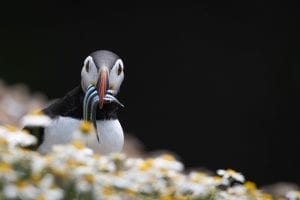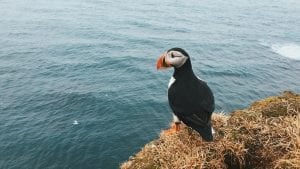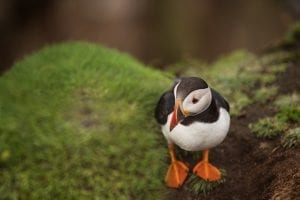15 Perfect Facts about Puffins
Puffins are odd little birds that have something of a cult following! Cute and docile, they are also known for being pretty smart – and there’s likely to be plenty about them you don’t know. There’s more to these curious critters than just picture postcard looks and their prosperity for island living. Keep reading for some fun facts about puffins.
1. They split their time between land and sea.
It’s reported that Puffins spend approximately the same amount of time on seawater as they do on land! They spend as long as eight months at sea, and sleep on it too!
2. They’ll dig deep to make their homes.
Puffins build their nests in rocks or even by digging burrows and building nests on land.
There are eight places in the world known as ‘Puffin Island’!
3. They are island birds.
Puffins usually live in large colonies on mainland coastal areas or congregate on islands. That’s why you’ll generally see them milling about near the coast on wildlife programs or out in the wild if you’re lucky!

4. They are known enemies of gulls.
The chief predator of puffins are blackbacked gulls. These adept hunters swiftly dive bomb or attack their eggs.
5. Puffins are eaten by some humans.
Humans also hunt some puffins to be used for food. In Iceland, puffin meat is served in restaurants. Not sure how that tastes – don’t ask us!
6. They mate and propagate in the spring.
Puffins mate and lay eggs around April. They usually form monogamous relationships and both parents take responsibility for protecting eggs and nurturing offspring.
7. They can live for a long time in the wild.
Puffins in the wild have been known to live for 30 years! Not a bad life at all.
8. What’s in a (Latin) name?
Puffins belong to the genus ‘fratercula’. The name of this genus translates to mean ‘little brother’. But what does that actually have to do with puffins?
9. The name comes from their looks.
This refers to the brotherhood of monks whose clothing of long dark robes resembles the long dark feathers on the backs and sides of puffins!

10. What’s a group of puffins called? Pick one!
There are multiple names for a group of puffins including a puffinry, a circus and a burrow.
11. Where are the most puffins found?
The largest colony of puffins is found in the Icelandic area of the Westman Isles.
12. Sounds painful – but it’s true!
Puffins shed their beaks. Or, at least part of them! In winter, some puffins shed the outer surface of their beaks. This is usually the particularly brightly colored part and studies indicate that the coloring is the reason for this phenomena.

13. There’s a reason behind the shedding.
The bright coloring is thought to attract predators at that time of year, so this could be a means of self-defense.
14. Puffins are known to drink sea water.
They have adapted to also filter the salt from sea water! Puffins have glands in their nostrils which filter the salt.
15. What’s a baby puffin called?
Puffin chicks are known by a very cute name! They are called ‘pufflings’!

FAQs about Puffins
Can Puffins fly well?
Yes, puffins are good flyers. They can boost to speeds of up to 55 miles per hour. Due to the speed at which they fly, there are more photographs and films of puffins on the land or water than in the air. They are known to cruise at approximately 30 feet.
How many eggs do puffins lay at a time?
Puffins lay just one egg at a time each year. Both parents take parental responsibility - nice to know!
How are Puffin chicks fed?
The beaks of puffins are specially adapted to hold up to several fish at a time. Their beaks are capable of scooping up to 20 or more small fish during a dive! Therefore, young puffins are known to eat whole fish!
Do you know any fun facts about puffins? Share them in the comments below!
This page was last modified on October 15, 2023. Suggest an edit








